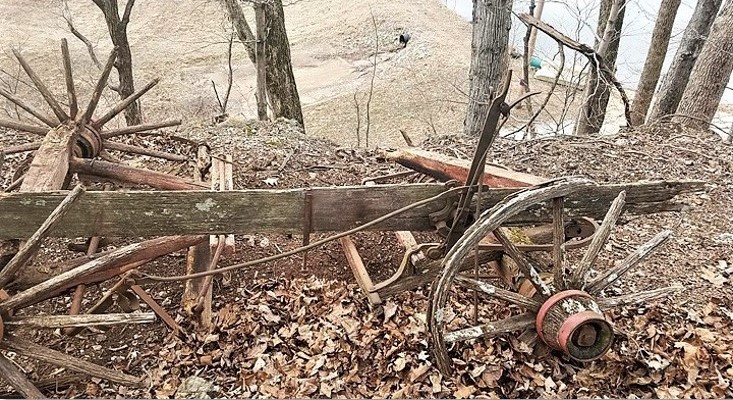Like a lot of folks, I’ve heard my share of collector stories. Many are whispered tales of amazing finds and secret truths. Others are legends based on an endless volume of unsupported claims. A few of the yarns were deliberately crafted for the most gullible of targets.
No matter the speculation about a particular treasure, as rumors of our favorite farm and western collectibles take root, it’s easy to find facts, fibs, and fables all competing for survival. Like camouflage wings on a moth or the mimicking leaves of the Boquila Trifoliolata plant in South America, sometimes, it’s hard to discern one reality from another. Hence, the collector’s creed of Caveat emptor.
From knowing an artifact’s history to truly understanding rarity, condition, design, value, and other features, it’s important to know what you don’t know. After all, that’s where the real secrets lie and that awareness can be the difference between a poor purchase and an amazing one! Coupled with the recognition that every old school enthusiast is a curator of this history, each of us has the opportunity to pass along either truth or fiction to the next generation.
One iconic collectible that’s surrounded by its share of false beliefs is that of the horse-drawn farm wagon. As a speaker, writer, collector,and historian of these wheels, I’m regularly confronted with folklore and misunderstandings. Complicating matters, from social media and sales environments to hearsay and coffee shop gossip, there’s a pandemic of false information always in the air. It’s enough to overwhelm any historian, not to mention completely surprise unsuspecting buyers and owners.
While many folks in the twenty-first century have experience with wagons and may have even grown up with them, none of us were driving these vehicles over a century ago, during the heyday of wagon use. So, to better understand the background of these rolling icons, it’s important to pay attention to primary source details and confirmed history of individual brands. With that as our prelude, I’ll share some misperceptions I’ve encountered in the world of wood-wheeled, farm wagons.
Chuck Wagon Lore... For over thirty years,I’ve been approached with a line of legends related to farm wagons and early western vehicles. One of those tales involves the legendary chuck wagon and the iconic cowboy cook. Typically, a chuck wagon is a farm-style wagon with an enclosed, wooden cabinet that sits just inside the rear of the vehicle. That self-contained box is referred to as a chuck box. The ‘chuck’ or food box will include a hinged table as well as a myriad of drawers, compartments, utensils, cooking ingredients, and other items necessary for food preparation. While this general description is an accurate profile, I’ve heard folks refer to prefabricated, metal ingredient containers as being a more polished, factory-made chuck box. It’s a rumor that seems to grow more prolific with time. In reality, these stand-alone, metal cabinets were sold through retail outlets and clearly used within home kitchen environments. In fact, they were professionally referred to as ‘Kitchen Cabinets’ for the home. How do we know this? Even though early advertisements are scarce, the U.S. patent files are full of evidence that explains the designed purpose of these pieces.
To be fair, is it possible that one of these mechanically shaped contraptions could ever have ever been used on an actual chuck wagon? Surviving evidence suggests that the possibilities are extremely slim. After thirty years of extensive research, I’ve never seen a single primary source photo showing one of these pieces used on a chuck wagon during the 1800’s or early 1900’s. In fact, it really doesn’t make sense if one understands what a chuck box on a cattle drive (or roundup) was used for and, ultimately, needed to carry. These machined metal ‘Kitchen Cabinets’ were designed to hold and dispense common ingredients for food preparation. Things like coffee, meal, flour, sugar, spices, bread, and cake were, typically, what these flavor pantries held. Additionally, they were often designed with a sifter and coffee mill. As a rule, they did not have provisions for holding large knives, cups, plates, bowls, jugs, rolling pins, coffee pots, lanterns, canned goods, lard, and so forth. Additionally, throughout my reviews of patent filings, I’ve yet to find a single mention that these pieces were purposed for use in cattle drives, cross-country wagons, or even camp outings.
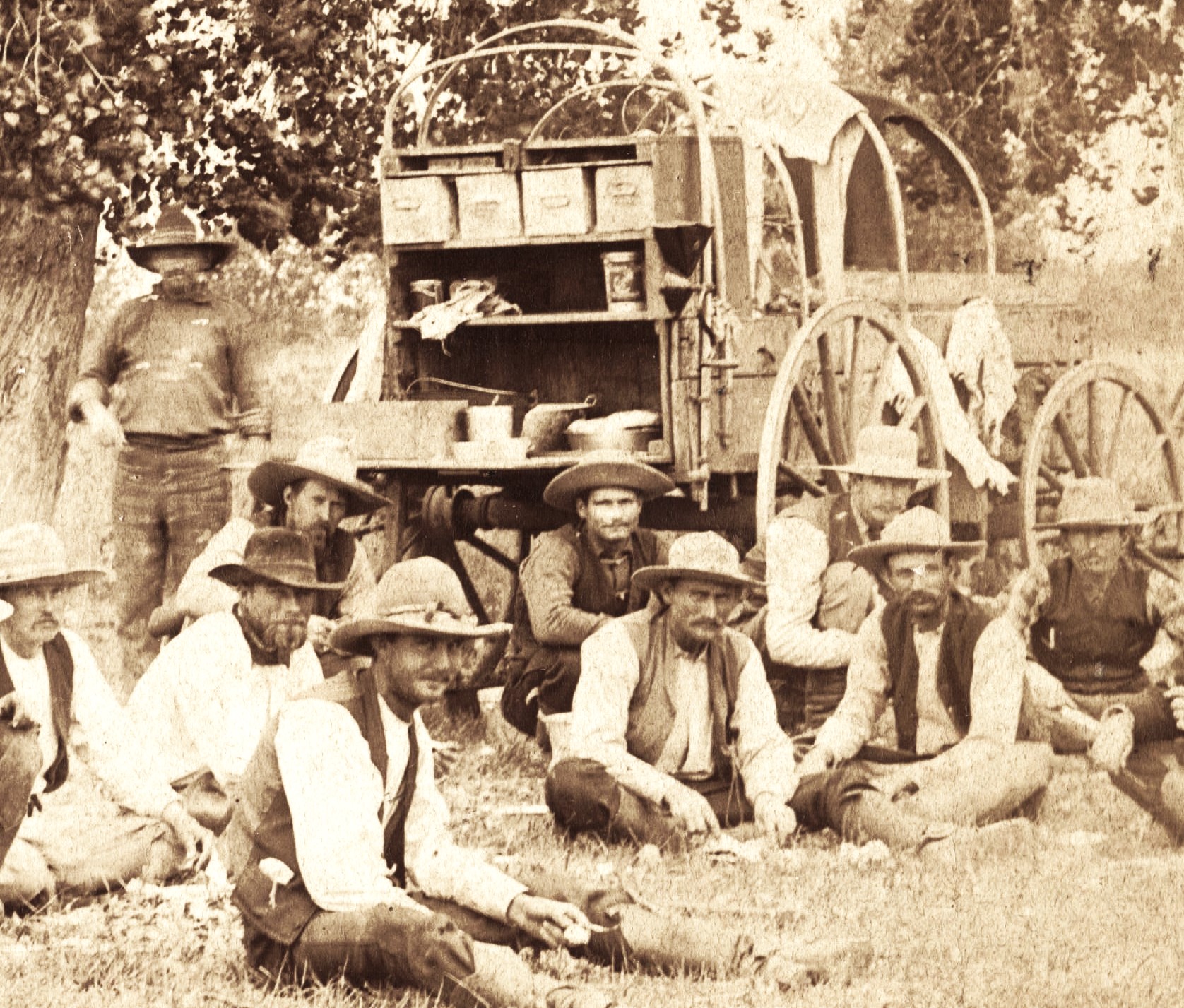
Military Farm wagons... Another misguided belief I’ve encountered centers around stenciled information on a few, twentieth century farm wagons. On the front end-gate and other locations of some farm wagons are the words “Made to U.S. Government Specifications.” I’ve heard confident declarations that these are references to military vehicles. While the military did have stenciling pertinent to a vehicle and its assigned unit, this particular lettering isn’t a reference to wagons built for the U.S. Armed Forces.The words actually refer to wartime standards imposed by Uncle Sam to help preserve as many supplies as possible for the war efforts. Case in point, by the mid-teens of the twentieth century, there were over 5,000 different combinations or styles of farm wagons. It was enough to cause considerable pressure on the forests of the U.S. as well as a manufacturer’s ability to maintain material stock. Customized orders were rampant and there was a need to focus finances and better balance raw material needs for war industries.
All farm wagons are basically the same... The thought that all farm or box wagons look alike is one of the biggest fallacies and mistakes a potential buyer can make. Just like people, every one of these old sets of wheels has a personality and story to tell. Each one is built a certain way with specific parts that often help point us to a vehicle use, maker, patents, and a particular time frame of manufacture. Just as there’s a world of difference between a Chevrolet pickup from 1930, 1960, 1990, and 2024, the same kind of evolution and distinction occurred between wagons of different brands and different eras. Knowing how a builder styled and manufactured their vehicles during a particular time can be crucial to the different identities in any collection.
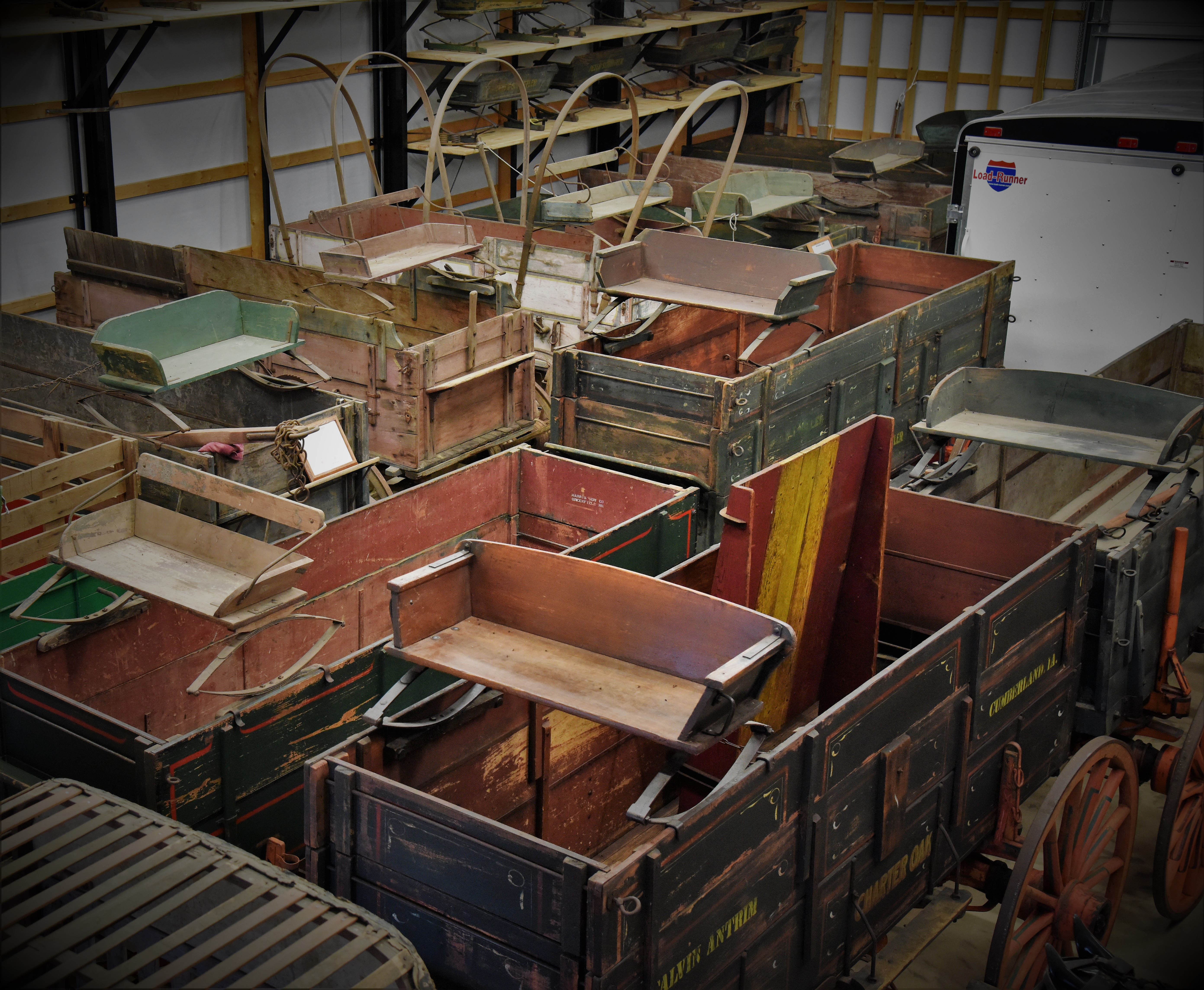
A rotted down wagon is a pile of junk – Somewhere, another lost piece of history has been left to the elements and ignored for generations. What brand is it? How old is it? What is the significance of the old wood? Most folks never ask these questions because we live in a disposable society trained to ignore everything that doesn’t have a polished and appealing look. What might appear to be a pile of rotted, rusted, faded, and forgotten debris might actually be valuable history. Could it be an undiscovered, nineteenth century brand that collectors have been searching for? The only way to know is to either understand how to decipher the maker and time frame or be in the company of someone who does. I’m reminded of the seemingly endless line of old shipwrecks that have been found with priceless artifacts. Hundreds of years and thousands of people have passed over many of those wrecks. Only a few are found because only a few spend the time to understand and uncover them. Today, there are some legendary wagon brands that have never been found. Others have only a few known survivors. Names like Murphy, Cooper, Caldwell, Star, Kansas, and Jackson were once popular transports in the Old West. Today, they are distant memories with little to show of the legacy they left.
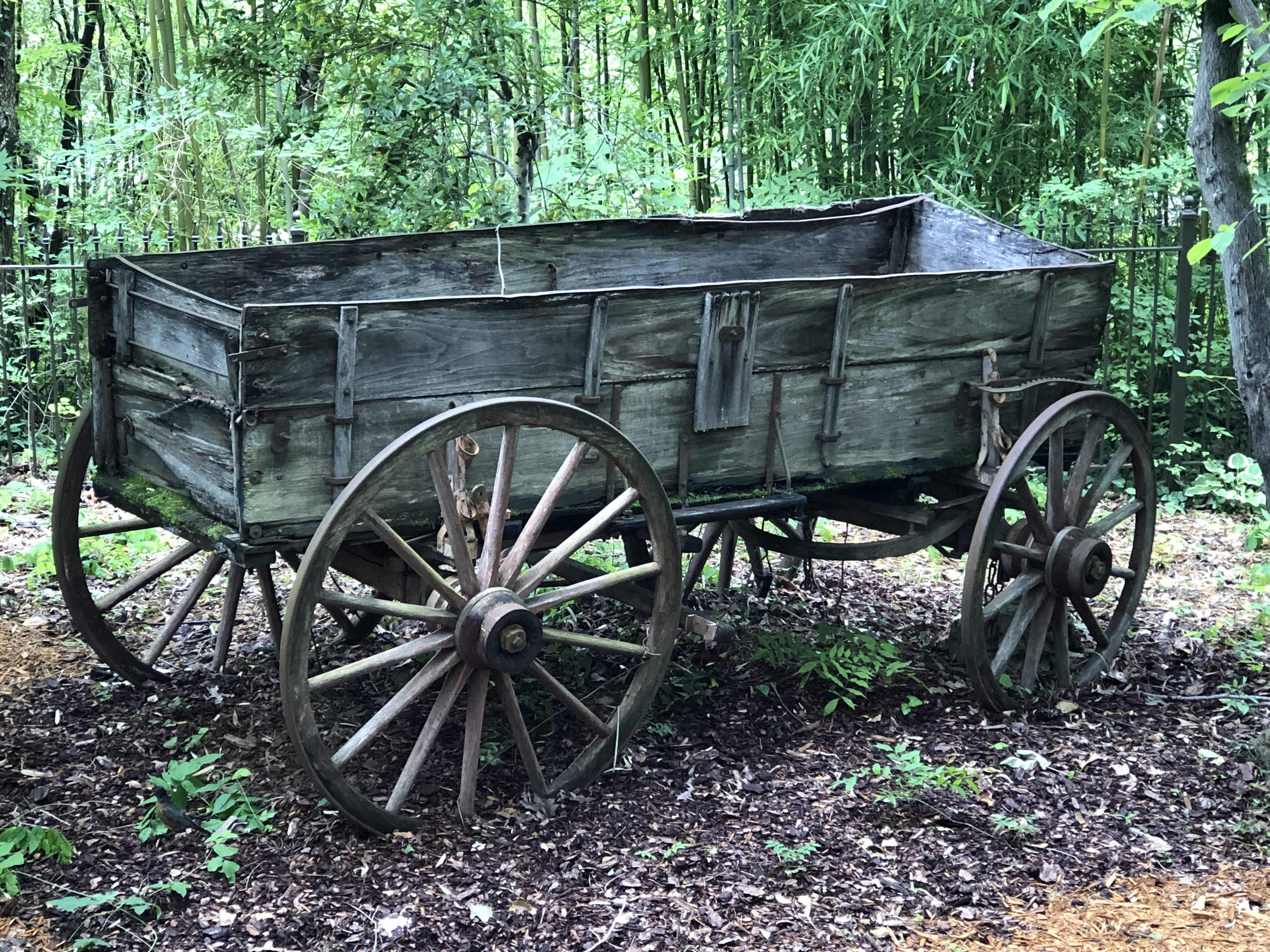
An 1880 John Deere – If I had a nickel for every time I heard of someone with an 1880’s John Deere wagon, I’d be a much richer person. It’s another of the proofless professions that are too often accepted as fact. As the company’s regional distribution houses grew, some of them were definitely engaged in the private labeling of buggies and wagons. To that point, Deere also received trademark certification for the ‘John Deere’ name to be applied to wagons in the latter part of 1897. However, I’ve seen no evidence that the trademark was actually used on farm wagons prior to the twentieth century. During the nineteenth century, the home office of John Deere was marketing farm wagons, but they were the seller and not maker of thesevehicles. With a strong network of implement dealerships and branch houses, thefirm retailed different brands including Fish Bros., Mitchell, Old Hickory, Peter Schuttler, and Moline. The relationship with the Moline Wagon Company of Moline, Illinois was so significant that, by 1910, Deere had purchased the entire company. Today, many surviving John Deere wagons still have the Deere name emblazoned on the sides of the box with the city/state of Moline, Illinois positioned below. There are very few of the first John Deere wagons still in existence.Those wagons are actually dual branded, something that rarely happened in the wagon industry. The first John Deere-labeled wagon rolled out of the factory in 1910 as a ‘John Deere Moline’ with Moline situated under the Deere stencil. For clarity, this ‘Moline’ reference is not that of the city/state that was later placed below the Deere name but, instead, was the ‘Moline’ wagon brand name.The reason? Deere was capitalizing on the strong reputation and recognition of the age-old Moline brand. After a few years, the ‘Moline’ wagon reference was removed and only John Deere with the city/state info was left.
Moline versus Moline Mandt Wagons – I’ve seen collectors as well as museums mix-up these two wagon brands. Despite causing some confusion in name similarities, these are two, distinct brands with different names, histories, and designs. While both firms had company factories in Moline, Illinois and both made farm wagons, that’s about where the similarities stop. The Moline Wagon Company traced its deepest roots to the mid-1800’s and was a builder of farm, freight, log, and business wagons. In1910, Moline was purchased by the John Deere Company and within a couple of years, all wagons produced in the Moline, Illinois factory were rebranded exclusively with the John Deere emblem. Conversely, the Moline Mandt wagon brand is a direct descendant of the T. G. Mandt Company which dates its beginning to 1865 in Stoughton, Wisconsin. After Targe Mandt passed away in 1902, the firm and related assets were sold to the Moline Plow Company in Moline, Illinois. Similar to Deere borrowing the Moline wagon name on its wagons, the Moline Plow Company referred to their wagon company as Moline-Mandt. T.G. Mandt had been a prolific inventor and was well-known for building high quality wagons. By using the Mandt name, the plow company was able to continually leverage the reputation that Mandt had so successfully established.
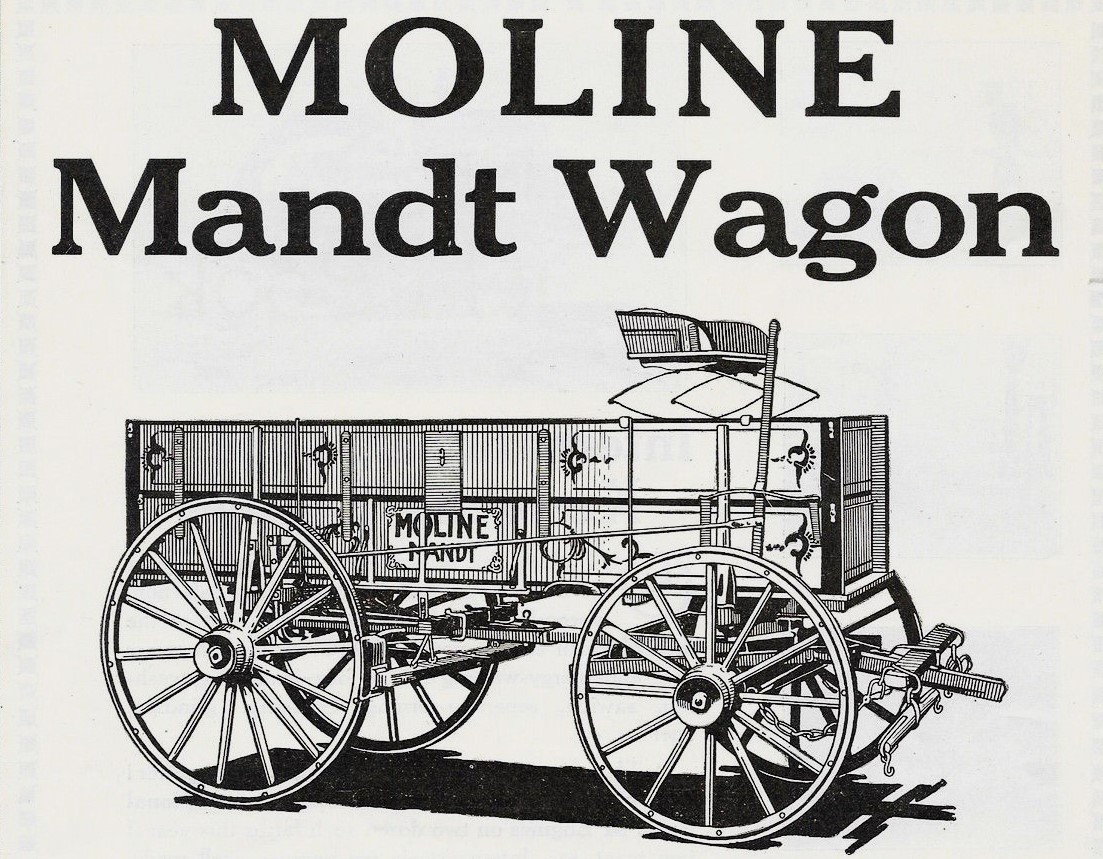
Only the running gears changed over time – The feeling that boxes – or beds as they’re sometimes called – have changed very little can be quickly disproved. From the days of the Conestoga and Road wagons through the time of America’s Great Depression, the evolution is obvious. Early wagon boxes tend to have sides that are rave framed (meaning there’s a sort of exoskeleton to the box design). Likewise, floorboards, hardware, and end gates are generally shaped and attached differently on early boxes.
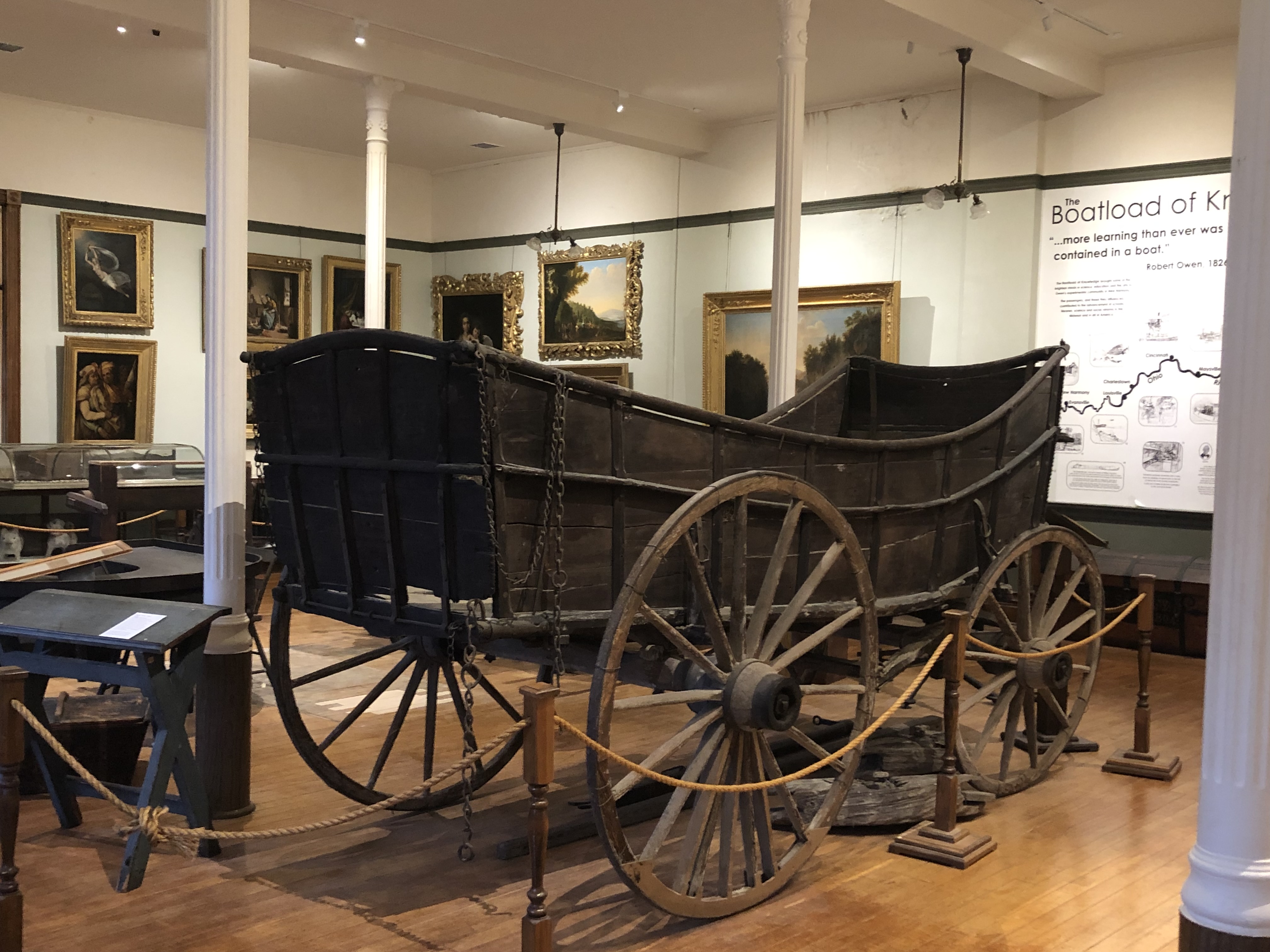
When it comes to box widths, I’ve seen claims purporting that all boxes built in the U.S. will either be 38 or 42-inches between the bolster stakes. Again, this is false and can easily be proven. Some St. Louis builders, for example, built boxes with 43-inch widths well into the twentieth century. Likewise, early farm wagon catalogs are full of specifications for 44-inch wide farm wagon boxes.
As the nineteenth century came to an end, the legendary Studebaker brand introduced a wagon bed so different from previous designs, they referred to it as their 20th Century Box. This box was indeed available in the 38” and 42” widths. From the company’s perspective, the design epitomized the most advanced design at the time. Finally, a quick search of U.S. Patent office files will show a seemingly endless number of nineteenth and twentieth-century submissions for rub irons, end gates, box rods, footboards, box tighteners, and other box-related patents. This doesn’t count the wide variety of box styles for specific farm wagon use. Cotton, rock, tobacco, and other purpose-built boxes all touted different designs than the ‘typical’ farm bed. Over the decades, virtually every part of a wagon box was affected by changes and advancements. So much for the thought that wagon box designs were left in neutral!
If it’s on the internet, it must be true! – We live in a world where many folks feel that the internet can accurately tell them everything about anything. Unfortunately, not everything is common enough to have extensive details profiled on the web, especially when it comes to overlooked history. In fact, when it comes to antique, wood-wheeled wagons, both social media and well-intended websites can miss a lot of facts while simultaneously passing along a good deal of unsupported gossip. Wading through the minutia to find evidence that ensures accuracy can be tough. At the end of the day, the veracity of all statements needs to be qualified by primary sources. Without period accounts to authenticate a claim, all we’re left with are best guesses and assumptions. Original, period materials, whether image-based or written, can give us the most accurate understanding of what was true or false during a time in question.
Owensboro brand wagons – Someone once told me that, “A blind man can identify an Owensboro brand wagon because it had a pair of rivets in the felloe surrounding each spoke.” While the comment was well-intended, it wasn’t accurate. The gentleman had seen a number of wagons and the only one he had ever encountered with two rivets per spoke was Owensboro. It was a good observation in terms of noticing a feature on many, but not all Owensboro wagons. Unfortunately, a lack of familiarity with literally thousands of other brands left the statement hollow and misguided. There are many other brands – including Florence, Kentucky, Springfield, Stoughton, and Weber – that used dual rivets to help reinforce spoke tenons. Making things a bit more confusing, there were also a number of Owensboro wagons that used no rivets around the spokes. Again and again, it’s important to proceed with caution when identifying and evaluating early wagons.
For roughly two hundred years, wood-wheeled farm and freightwagons filled the American landscape. With literally tens of thousands of early builders and repairers, there's a lot of material to digest. As a result, these workhorses are likely to continue stirring up questions. For every curiosity, though, there is an answer. It may be definitive, speculative, or far-fetched gossip. At the end of the day, every lover of history must learn to navigate the landscape of actual knowledge. How well that’s done can have a significant impact on any collection. No matter the collectible, every loose assertion needs just three things to survive. It needs someone to share it, receive it, and believe it. Understanding what we don’t know can be the first step in finding solid answers and better collections. After all, when truth can’t be trailed, it leaves the story open for doubt and someone to just Say It Ain’t So.
David Sneed is an early western vehicle historian, writer, collector, speaker, and founder of the Wheels That Won The West® Archives. All text and imagery is Copyright © David E. Sneed, All Rights Reserved
